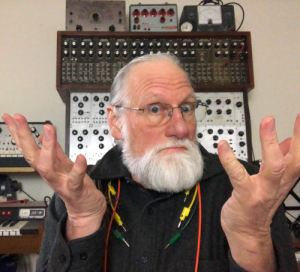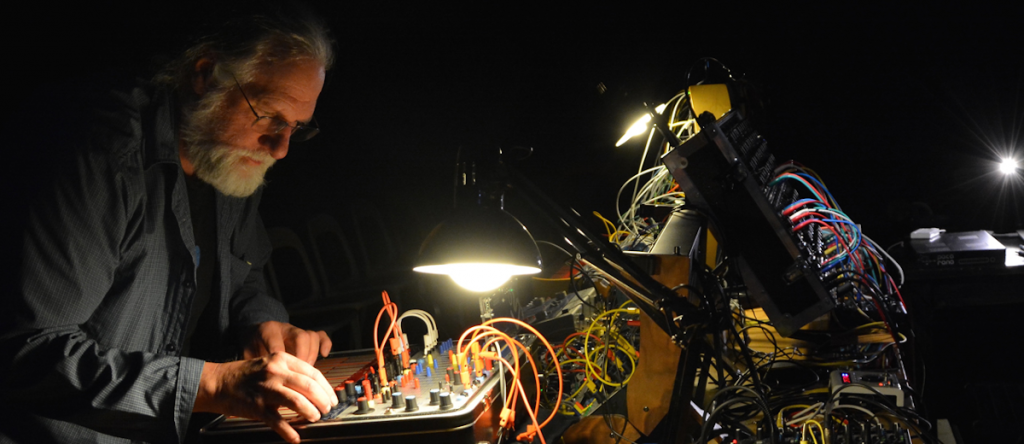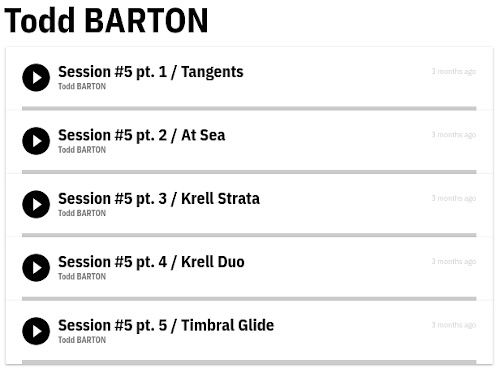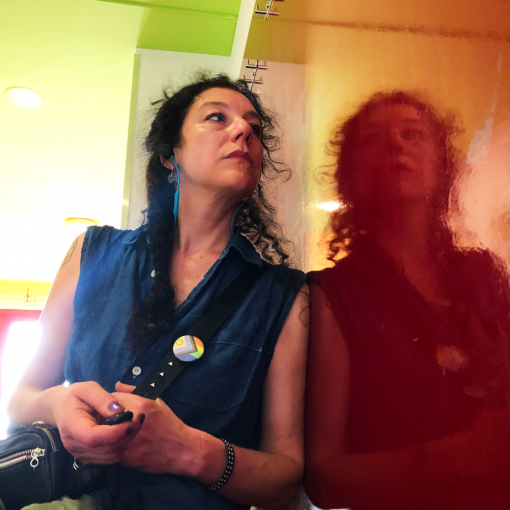 Todd Barton has been composing for films, theatre, radio, quartets, orchestras and more besides over many decades. Nowadays, Todd teaches Buchla, Serge, Hordijk and eurorack online. and is a consulting artist for Buchla Electronic Musical Instruments.
Todd Barton has been composing for films, theatre, radio, quartets, orchestras and more besides over many decades. Nowadays, Todd teaches Buchla, Serge, Hordijk and eurorack online. and is a consulting artist for Buchla Electronic Musical Instruments.
To accompany Todd’s session for Philippe Petit‘s Modulisme platform, Freq interviewed him about a life in modular synthesis.
When did you first become aware of modular synthesis as a particular way of making music, whether as part of electronic music in general or more specifically as its own particular format, and what did you think of it at the time?
My first encounter was with a Buchla Music Easel that my friend Doug Leedy handed me and let me just explore it for a few days back in the mid-1970s. At that time I had no idea what I was doing… just plugging in patch cords and twisting knobs hoping to get a sound. Eventually sounds came. I was smitten with the ability to alter timbres and create sounds from scratch.
What was your first module or system?
Serge Modular Music System 1979 built by Serge in the Haight-Asbury in San Francisco.
How long did it take for you to become accustomed to patching your own synthesizer together out of its component parts?
Weeks, months. In 1979 there were not very many books on patching so I chose to just put in four to eight hours a day exploring and learning experientially.
Do you prefer single-maker systems (for example, Buchla, Make Noise, Erica Synths, Roland, etc) or making your own modular synthesizer out of individual components form whatever manufacturer that match your needs.
I prefer single-maker systems, probably because I come from a classical/jazz background and these systems feel like a complete self-contained instrument not unlike a guitar, violin or trumpet I can learn deeply.
East Coast, West Coast or No-Coast (as Make Noise put it)? Or is it all irrelevant to how you approach synthesis?
I grew up on Serge and Buchla. But those distinctions weren’t around until the twenty-first century. In many respects we’re all just sculpting electrons and sound; the three labels mentioned are hooks to hang our conceptual “coats” on. More specifically, the Buchla paradigm is so different than the Serge or Hordijk paradigms and design philosophies, yet they are lumped under West Coast. As my son said to me when he was eight years old, “Gee Dad, let’s not talk about it, let’s just do it!”
Do you tend to use pure modular systems, or do you bring in outside effect and devices when playing or recording?
When performing solo Buchla Music Easel I usually have a simple looper and one effects (reverb/delay) pedal.Do you find that you record straight with no overdubbing, or do you end up multi-tracking and editing tracks in post-production?
It totally depends on the project. My album from last year, Multum In Parvo, was performed in my studio in one un-edited take.
My recent CD, Spaces, was composed using Logic and lots of studio takes and manipulations.
Do you pre-patch your system when playing live, or do you tend to improvise on the spot?
Improvise on the spot.
Which module could you not do without, or which module do you you use the most in every patch?
Since I tend to use single-maker systems that are in a sense semi-modular it is hard to say — design-wise they are completely integrated — I guess the module I use most in every patch is the output mixer. 🙂What do you think that can only be achieved by modular synthesis that other forms of electronic music cannot or makes harder to do?
I don’t know.
Have you used various forms of software modular (eg Reaktor Blocks, Softube Modular, VCVRack) or digital hardware with modular software editors (eg Nord Modular, Axoloti, Organelle), and if so what do you think of them?
Rarely and not enough to form an opinion.
What module or system you wish you had?
None — over these past forty years I have had many, many different synths, systems etc and a while ago stopped acquiring and, in fact, have off-loaded many instruments, so that I am now focused on my Buchla, Serge and Hordijk systems with a small eurorack cabinet that is mainly Make Noise, Random*Source, SSF and Intellijel. That said, I do get to explore new modules that folks send me for review.Have you ever built a DIY module, or would you consider doing so?
Years ago my buddy and I soldered up a complete MOTM system from kits.
Which modular artist has influenced you the most in your own music?
Can’t pin it down to just one artist. Morton Subotnick, Bana Haffar, Richard Scott, Curtis Roads, Éliane Radigue, Pauline Oliveros…Can you hear the sound of individual modules when listening to music since you’ve been part of the modular world — how has it affected (or not) the way that you listen to music?
I’m not sure if I could identify individual modules at this point since there are a gazillion makers out there.
However, I can analyse a sound/timbrescape fairly quickly and identify how I could re-create it on any of my systems.
What have you been working on lately, and do you have any upcoming releases or performances?
Just finished a whirlwind of releases and performed this past weekend. I’m planning to home-base in Italy this coming winter 2020 to do concerts and workshops. Things are solidifying for Rome, Brussels, Amsterdam, and possibly Milan, Bologna, Vienna and hopefully Berlin.
Can you outline how you patched and performed your Modulisme session?
A couple of tracks were live Easel performances, ie “At Sea”. The Krell tracks were, of course, self-generating patches. And “Tangents” and “Timbral Glide” are working the knobs.Who would your dream collaborator be for a Modulisme session or otherwise?
Bana Haffar 🙂
*





